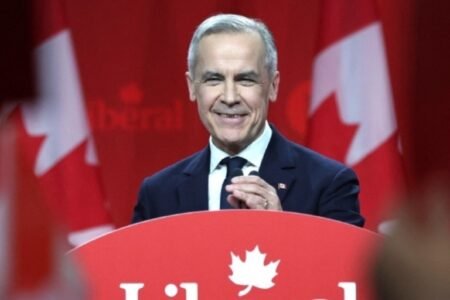On Wednesday, a major winter storm battered the Northern Plains and Upper Midwest with high winds and heavy snow, closing hundreds of schools, grounding air travel, and making road travel difficult, if not impossible, in some parts of the United States.
On Wednesday morning, more than 50 million Americans were under winter weather advisories as the storm moved across a wide swath of the western and northern United States and into the East. The National Weather Service predicted up to 2 feet (60 cm) of snow and winds of up to 60 miles per hour in some areas during the day and into Thursday.
In Sioux Falls, South Dakota, 17 inches (43 cm) of snow fell, with wind gusts reaching 45 mph (72 kph) and temperatures hovering around 10 degrees Fahrenheit (minus 5 degrees Celsius).
“It’s really cold, but people still want their coffee and eggs,” said Bre Bethke, 37, a manager at M.B. Haskett Delicatessen, after being pelted by the elements every time she opened a drive-through window for a customer.
“Our regulars want to come here to escape the cold. But not today, please. This is excessive.”
The storm also pounded California and brought a mix of snow and sleet to the East, including New England, where forecasters warned motorists to beware of slick roads.
Snow-covered roads also will make travel treacherous in the Upper Midwest, and ice-covered power lines and falling trees could cause power outages late on Wednesday and into Thursday, said Frank Pereira, a forecaster with the weather service’s Weather Prediction Center in College Park, Maryland.
“Travel will be near-impossible,” he said.
Experts say the growing frequency and intensity of such storms, interspersed with extreme heat and dry spells, are symptoms of climate change. While the East Coast has experienced a relatively mild winter, the Northern Plains has experienced an extreme winter in terms of snowfall and temperatures, according to the weather service.
Among the hardest-hit cities in the Midwest was Minneapolis, where some 20 inches (50 cm) of snow and 45 mph (72-kph) winds were expected to create whiteouts.
“We are bracing for what is likely to be one of the largest snowstorms in Minnesota history,” St. Paul Mayor Melvin Carter said at a news conference.
Local officials declared emergencies in Minneapolis and neighboring St. Paul, and motorists were told not to be out on the roads.
Minneapolis’ school system said it would hold classes remotely for more than 29,000 pupils for the rest of the week. Dozens of school districts canceled classes in Dakotas, Colorado, and Wyoming.
The storm wreaked havoc on morning air travel. Some 3,500 flights were delayed or canceled across the nation, including 470 flights into and out of Minneapolis, according to flightaware.com.
It also produced a band of freezing rain stretching from central Iowa through Chicago and into southern Michigan, coating roads, trees, and power lines with up to a 1/4 inch (0.6 cm) of ice, the weather service’s Pereira said.
The storm hit California on Tuesday and was expected to continue through the end of the week. A rare blizzard warning was issued for Los Angeles County mountains, the first issued by the weather service since 1989.










